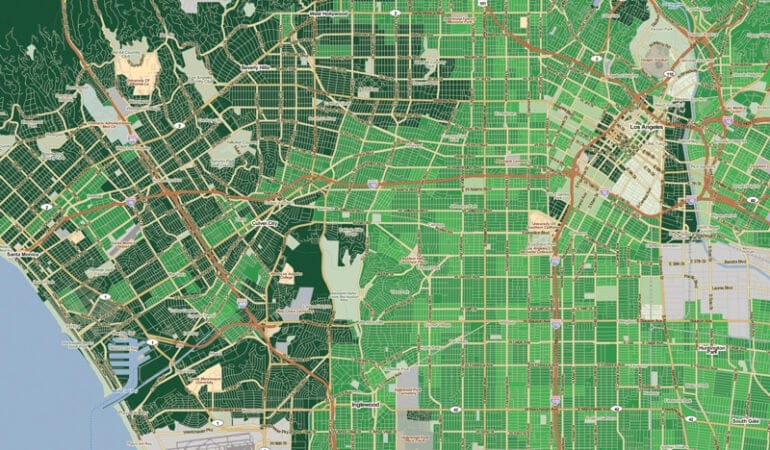
As Los Angeles experiences record population growth, more than 34,000 people in the city are homeless, and a total of more than 55,000 people are experiencing homelessness in Los Angeles County. Median gross rent in Los Angeles County was $1,264 in the period between 2012–2016, compared to the national median gross rent of $949.
View the PDF version of this map for more detail and a key.
Source: The Place Database. www.lincolninst.edu/research-data/data/place-database